Podium complete for Golden Globe Race
Published on May 12th, 2023
Les Sables d’Olonne, France (May 12, 2023) – Michael Guggenberger (AUT) started the 2022-23 Golden Globe Race with a few impediments compared to other entrants in the GGR.
First, he is coming from land-locked Austria when most of the other entrants grew up on the seaside. Second, he started sailing only 12 years ago when most other GGR competitors started sailing at an early age from dinghies, going into keelboats later, some raking up significant mileage on the way.
He did, however, compensate for his relative inexperience with inextinguishable passion and dedication to make it to the GGR start line, and complete his race on his Biscay 36 Nuri in 249 days. He was welcomed at the finish by winner Kirsten Neuschäfer (ZAF), second place Abhilash Tomy (IND), and Chichester Class winner Simon Curwen (GBR) (GBR) as well as hundreds of enthusiasts on the channel and the stage.
Originally planning to enter the 2018 GGR on an Endurance 35, he later switched rides and bought a ketch-rigged Biscay 36 from Antoine Cousot (FRA), who raced later rebuilding and preparing it with his Team Manager Stefan Weigel, turning the graceful cruiser into a bullet-proof yacht that could weather the worst conditions.
“Nuri round the world voyage with no major issue is due to the structured preparation of Michael and our concept of enabling him to cope with all possible problems,” explained Stefan Weigel, Michael’s team manager and Nuri Sardines boat captain.
“When he reached out for an electric refit, we decided it made more sense to teach him how to do it rather than doing the job for him. It proved a good idea, especially during COVID travel restrictions and worked all the way through Gijon in Spain for the boat’s final preparation.”
Nuri Sardines, an artisanal Sardine factory based in Matosinhos, Portugal, liked the artisanal feel of the race and Guggenberger’s campaign, and joined it at a timely moment, providing him with welcome support to make the start line in good conditions. He may have been short on water in the Pacific, wondering if he could finish his round the world trip without stopping for water, but never ran out of sardines.
“Everyone at NURI has been closely following Michael over the last eight months,” said Jakob Glatz, Glatz&Co/Nuri Sardines. “We are in awe of his achievement and are incredibly proud of him. Just to witness him starting in this group of highly experienced sailors last September was a great moment. That he was able to finish as one of only three out of 16 starters is almost unbelievable. We are truly honored that we could be part of his journey.”
Guggenberger’s objective was reached 250 times over, or the number of days at sea around the world with no major breakage or repair. This is a testament of both the preparatory work done on Nuri Sardines, but also the conservative way of sailing of Michael.
The Austrian adventurer made good use of the ketch-rig to always have the right canvas for the weather encountered on his position, which he finally mastered in the south Atlantic, significantly improving his daily averages by sailing with less sail area and not overly pushing the boat.
All sailors had their own way of dealing with isolation and the lack of exercise on board, some read books, others played games or went swimming. Guggenberger was dancing every time he could, taking the disco ball out and playing his favorite tunes on tape, which is probably the largest (if not the only) collection of Electro and techno music ever recorded on tapes!
He also managed the long Pacific crossing and the 100 degrees of latitude up the Atlantic from Cape Horn to Les Sables d’Olonne through regular HF contact with the other sailors around him, including long-lasting friendships with Kirsten Neuschäfer, Abhilash Tomy, and Jeremy Bagshaw.
“The GGR has been an incredible voyage, I had already changed me in the preparation leading to the start, and changed me in more ways than I had imagined during the 249 days at sea,” said Guggenberger.
By defying the odds and surviving the grueling race with the biggest attrition rate in the world, he has made it to the third and last ranked position in the GGR, completing a podium never seen before in a ocean race, let alone a solo, non-stop, race around the world.
India and Austria may not be known for their importance in the sailing world but have found themselves true Ambassadors of the sport. South Africa is a well-known sailing nation but never reached the winning stage of round the world racing.
“While we had a big attrition rate again, the finish proved exciting,” observed Don McIntyre, GGR Founder and Chairman. “We have the first woman to win a solo round the world race, a competitor coming back after nearly losing his life 4 years ago and a sailor from a land-locked country who started sailing 10 years ago. All of it for a never seen before podium of South Africa, India, and Austria.”
With Guggenberger on land, there is still one Chichester Class sailor at sea as Jeremy Bagshaw is around 1300 miles from the finish. As the second South African in the race, he lost ground when plagued by barnacles in the Atlantic and decided to manually scrape his hull in South Africa. Alas, the dreaded shells came back with a vengeance in the Indian Ocean, and he was obliged to lift his OE32 Olleanna and provision on water in Hobart.
Guy Waites (GBR) who stopped in Cape Town to lift Sagarmatha and a second time in Hobart to get a new life raft, has just entered the Northern hemisphere. No longer is in the GGR though he courageously decided to continue his round the world adventure and is heading to Les Sables d’Olonne.
Final Results:
Golden Globe Race:
1. Kirsten Neuschäfer (39) / South Africa / Cape George 36 – “MINNEHAHA”
2. Abhilash Tomy (43) / India / Rustler 36 – “BAYANAT”
3. Michael Guggenberger (44) / Austria / Biscay 36 – “NURI”
Chichester Class*:
1. Simon Curwen (63) / UK / Biscay 36 – “CLARA”
2. Jeremy Bagshaw (59) / South Africa / OE32 – “OLLEANNA”
* Competitors shift to this class by making one stop.
Event details – Entry list – Tracker – Facebook
Finish times were adjusted as race organizers issued credit for helping with the rescue of Tapio Lehtinen:
• Kirsten Neuschäfer: 35 hours + 30 litres of fuel
• Abhilash Tomy: 12hrs
Retired
Edward Walentynowicz (68) / Canada / Rustler 36 (dropped out, Sept. 8)
Guy deBoer (66) / USA / Tashiba 36 (ran aground, Sept. 16)
Mark Sinclair (63) / Australia / Lello 34 (retired in Lanzarote, Sept. 22)
Pat Lawless (66) / Ireland / Saga 36 (retired in Cape Town, Nov. 9)
Damien Guillou (39) / France / Rustler 36 (retired in Cape Town, Nov. 14)
Ertan Beskardes (60) / UK / Rustler 36 (retired in Cape Town, Nov. 16)
Tapio Lehtinen (64) / Finland / Gaia 36 Masthead sloop (sank off Cape Town, Nov. 18)
Arnaud Gaist (50) / France / BARBICAN 33 MKII-long keel version (retired near Saint Helena, Dec. 9)
Elliott Smith (27) / USA / Gale Force 34 (retired, Dec. 20)
Guy Waites (54) / UK / Tradewind 35 (stopped in Cape Town to clean/paint hull; retired in Hobart after losing his liferaft, Feb. 10)
Ian Herbert Jones (52) / UK / Tradewind 35 – “PUFFIN” (rolled/dismasted northeast of Cape Horn, April 10)
About the 2022 Golden Globe Race
On September 4, 2022, the third edition of the Golden Globe Race started from Les Sables d’Olonne, France. Sixteen skippers will face eight months of isolation sailing 30,000 miles before finishing in Les Sables d’Olonne. Along the route there are several marks of the course and media requirements.
In 1968, while man was preparing to take his first steps on the moon, a mild mannered and modest young man was setting out on his own record breaking voyage of discovery. He had entered the original Golden Globe. Nine men started that first solo non-stop sailing race around the World. Only one finished. He was 29 year old Sir Robin Knox Johnston. History was made. Navigating only with a sextant, paper charts and an accurate and reliable time piece, Sir Robin navigated around the world.
In 2018, to celebrate 50 years since that first record breaking achievement, the Golden Globe Race was resurrected. It instantly gained traction with adventurers, captivated by the spirit and opportunity. Eighteen started with five finishers.
To embrace the original race, competitors must sail in production boats between 32 and 36 feet overall and designed prior to 1988 that have a full-length keel with rudder attached to their trailing edge. Additionally, sailors have limited communication equipment and can use only sextants, paper charts, wind up clocks, and cassette tapes for music.


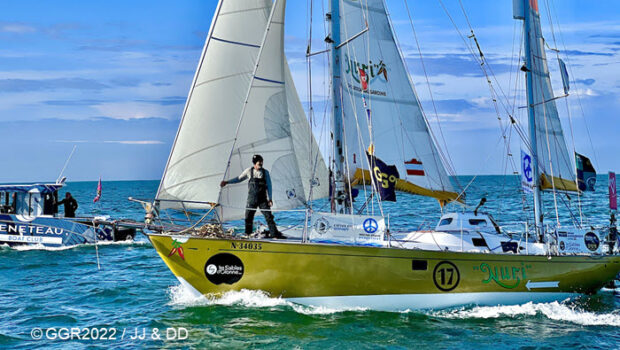


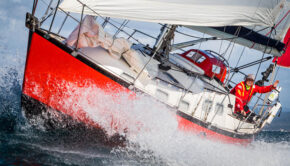
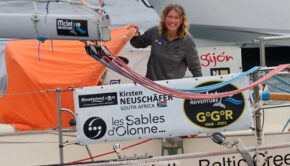
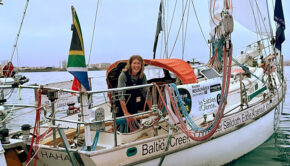
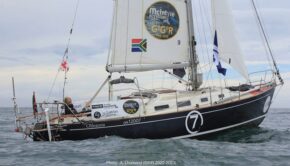
 We’ll keep your information safe.
We’ll keep your information safe.